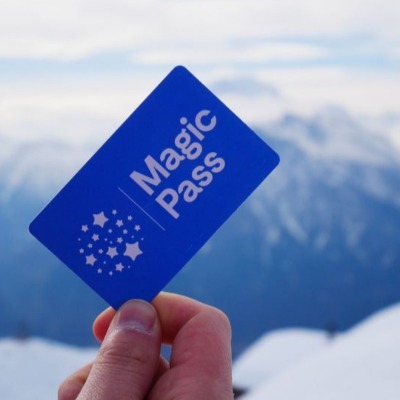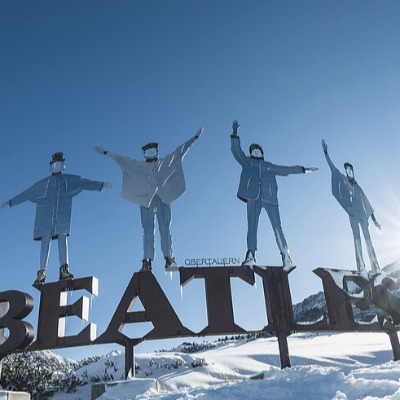Positive Developments In Financial Situation Of Swiss Lift Co’s

The latest study on the financial situation of Swiss mountain railways by the Lucerne University of Applied Sciences and Arts in collaboration with Seilbahnen Schweiz shows a robust financial recovery in the industry after the corona pandemic. The analysis notes, among other things, that 30% of the winter sports railways and 75% of the excursion mountain railways examined have a good to very good return on capital. Snow-sure offers and valuable summer experiences have a very positive effect on profitability.
Prof. Dr. Philipp Lütolf from the Lucerne University of Applied Sciences and Arts analyzed in depth the financial situation of 77 cable car companies in Switzerland in the 2022/23 period and in a multi-year comparison. The study, which examines 58 winter sports cable cars as well as 19 excursion cable cars, sheds light on the financial recovery and future challenges of the cable cars.
Financial stability despite weather-related fluctuations at winter sports facilities
Over the last ten years, the financial situation of mountain railways has improved overall. As always, winter sports railways showed a mixed picture. Around 30% of the 58 cable car companies analyzed achieved a good to very good return on capital, which enables substantial self-financing of investments. The return on capital is measured as an average of the years 2021/22 (snowy winter) and 2022/23 (snow-poor winter). Particularly large and snow-sure winter sports regions were among the frontrunners. For around 45% of companies, the return on capital can be classified as sufficient. At the lower end, however, around 25% of cable cars have to resort to external financial aid on a larger scale to secure the financing of future investments.
Interestingly, three of the largest cable car companies (Zermatt, Laax and Davos) contributed to 40% of the total earnings before interest, taxes, depreciation and amortization (EBITDA) of the winter sports lifts examined. Rising energy costs in 2022 and 2023 weighed on some cable car companies, which in individual cases led to a reduction in investable EBITDA of up to 30%.
The 19 excursion lift co's analyzed were able to overcome the effects of the pandemic well. Although they lost around CHF 260 million in investable EBITDA between 2020 and 2022, they invested over CHF 340 million in the years in question. They were able to finance 60% of this from EBITDA. In addition, they had to take on around CHF 100 million in debt and use around CHF 40 million in existing liquid assets. Thanks in part to these investments and the recovery of international tourism, the excursion mountain railways are back on track. Around 75% of the mountain railway companies analyzed reported a good to very good return on capital in 2022.
The 2023 financial year brought strong earnings growth, especially for companies that operate strongly in the intercontinental market. "These results underline how important international tourism is for the long-term stability of these companies," says Berno Stoffel from the Swiss Cable Car Association.
Guest behavior with dynamic pricing models
The study also examined how dynamic pricing models affect the traffic revenue of winter sports lifts. It was proven that introducing dynamic pricing has a significantly positive effect on the average revenue per skier day (number of guests per day). The data on the impact on the number of skier days is inconsistent. Some seem to be gaining compared to their "static" competitors, while others are losing. The data on traffic revenue is therefore also inconsistent. Guest behavior at companies that use the dynamic pricing model was also analyzed. The results show that online purchases increase significantly with dynamic pricing. Up to 30% of day guests book their ticket online just a few days in advance, while around 50% of guests buy multi-day tickets virtually a month in advance. It also shows that snow reliability is particularly crucial for dynamic pricing models.
Snow reliability with artificial snowmaking as the key to success
Snow-poor winters pose a growing challenge for winter sports lifts, so this topic was analyzed in more detail in the study. Around 20% of the cable car companies examined generated higher revenues in the snow-poor winter of 2022/23 than in the snowy winter of 2021/22, mainly destinations at higher altitudes in the canton of Valais. The study underlines that investments in technical snowmaking systems are crucial for long-term success. Winter sports lifts that cover less than 20% of their slopes with snow achieved lower returns on investment over several years. In addition, the summer offerings of many cable cars have developed positively. On average, summer traffic revenue increased by 45% in the period examined between 2014 and 2022; summer business now accounts for 25% of traffic revenue. It should be noted that for every one winter guest that is missing, winter sports lifts need between 1.3 and 4.2 guests in summer to compensate for the lost revenue. "The decisive factor for summer success is that there are valuable offers for which guests pay a price that is almost comparable to a day ski pass," says Philipp Lütolf.
opportunities for the future
The majority of Swiss mountain railways have developed positively overall and are well on their way to securing their financial stability, even if changes such as rising energy costs and climate change are challenging them. With targeted investments in artificial snowmaking and strengthening summer business, the cable car companies will be able to hold their own in the long term.
The study will be presented at the Swiss Cable Car Forum by Prof. Dr. Philipp Lütolf.













